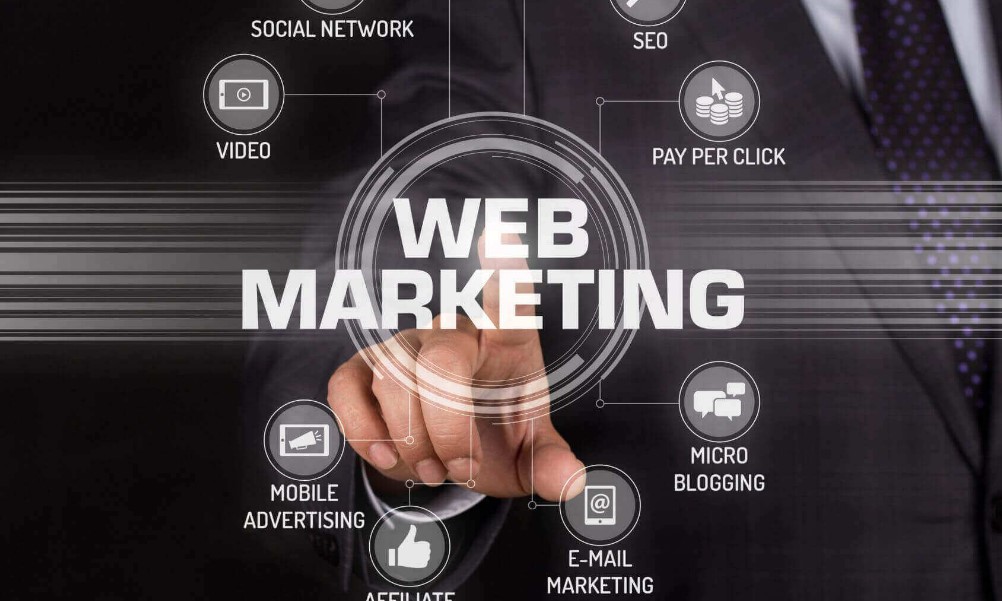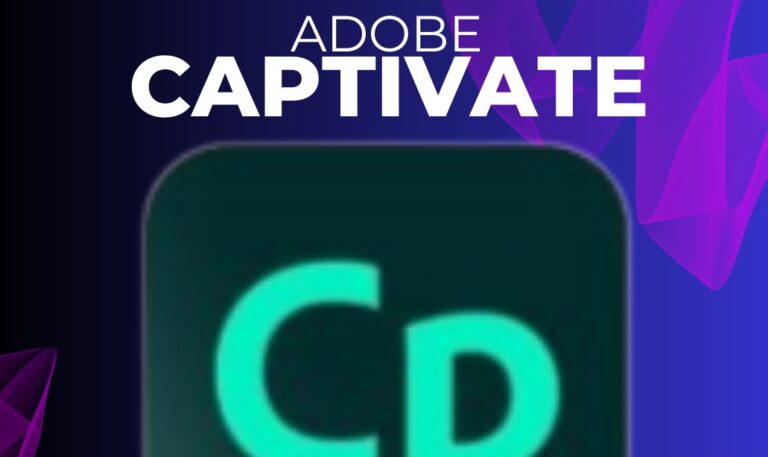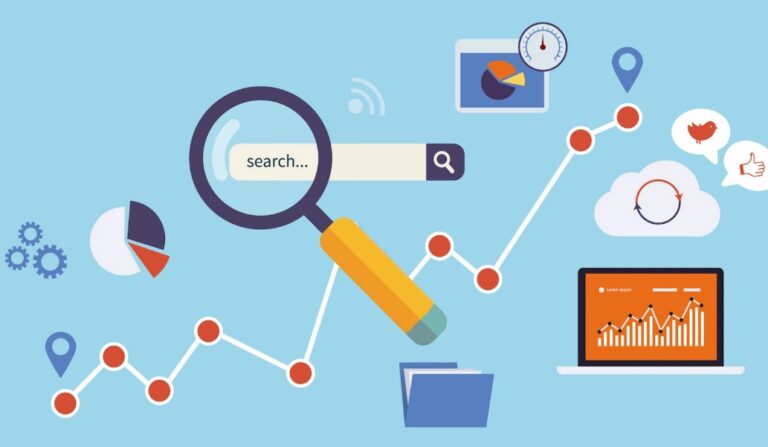Web Marketing Explained: How It Works and Why It Matters
In the age of digital transformation, web marketing has become a vital component of any successful business strategy. Whether you’re a startup aiming to build a customer base or an established company looking to scale operations, understanding and leveraging web marketing can set you apart in a competitive landscape. This article provides an in-depth exploration of web marketing, detailing how it works, its standout features, benefits, and the best tools to implement effective strategies. Additionally, we’ll discuss real-world examples, comparisons, and practical guidance to help you get started.
What is Web Marketing and How Does it Work?
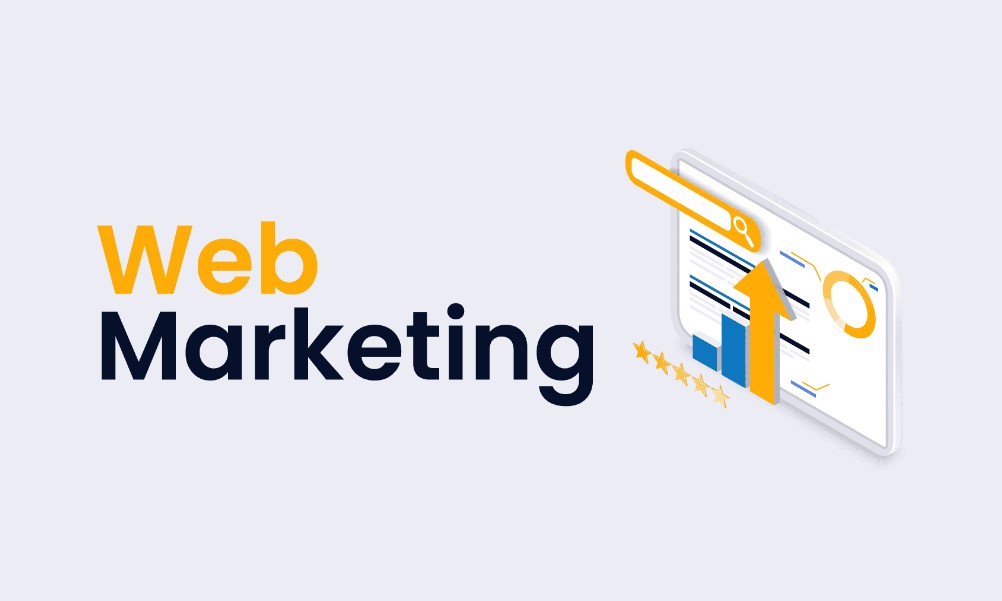
Web marketing, also known as digital marketing, is the process of promoting products, services, or brands online through various digital channels. These channels include websites, search engines, social media, email, and content marketing. The goal is to connect businesses with their target audience, enhance visibility, and drive conversions.
Web marketing works by implementing strategies such as SEO (Search Engine Optimization) to improve website rankings, PPC (Pay-Per-Click) ads to attract immediate traffic, and social media campaigns to build engagement. Businesses create compelling content and personalized messages to capture attention and retain customers. Data analytics tools track performance, providing insights to refine campaigns.
By leveraging these techniques, web marketing ensures a cost-effective and measurable approach to reaching potential customers and achieving business goals.
Types of Web Marketing
Web marketing encompasses various strategies and methods designed to promote products, services, or brands online. Each type serves a unique purpose and caters to different business goals, making it essential for businesses to understand and implement the right mix of strategies. Here are the key types of web marketing:
1. Search Engine Optimization (SEO)
Optimizing a website to appear higher in search engine results pages (SERPs) is known as SEO. Businesses can improve website structure and get organic traffic by focusing on pertinent keywords. Techniques include on-page optimization, backlink building, and content creation.
2. Content Marketing
This type focuses on creating and distributing valuable, relevant, and engaging content to attract and retain a target audience. Blogs, videos, infographics, and eBooks are common formats. Effective content marketing builds brand authority and nurtures customer trust.
3. Pay-Per-Click (PPC)
PPC campaigns entail purchasing advertisements that show up on websites, social media platforms, and search engines. Only when people click on their advertisements do advertisers get paid. Two well-known PPC platforms are Google Ads and Facebook Ads.
4. Social Media Marketing
Leveraging platforms like Facebook, Instagram, Twitter, and LinkedIn, social media marketing builds brand awareness, drives engagement, and fosters community. Organic posts, paid ads, and influencer collaborations are effective tactics.
5. Email Marketing
Email marketing involves sending targeted and personalized messages to subscribers. It’s ideal for nurturing leads, promoting offers, and maintaining customer relationships. Automated sequences and segmentation make it highly effective.
6. Affiliate Marketing
Businesses partner with affiliates who promote their products in exchange for a commission. This performance-based model drives traffic and sales through external networks and influencers.
7. Video Marketing
Video content, such as tutorials, product demos, and testimonials, engages audiences and boosts conversions. Platforms like YouTube and TikTok are powerful for video marketing.
How Web Marketing Works

Web marketing operates as a dynamic and multifaceted approach to promoting products, services, or brands online. It integrates various digital strategies and tools to attract, engage, and convert audiences, making it an indispensable part of modern business. Here’s a detailed explanation of how web marketing works across its core stages:
1. Traffic Generation
The first step in web marketing is to attract visitors to your website or digital platform. This can be achieved through various channels:
- Search Engine Optimization (SEO): By optimizing content with relevant keywords, businesses can improve their rankings on search engines like Google. This drives organic traffic and enhances visibility.
- Paid Advertising: Platforms like Google Ads and Facebook Ads allow businesses to create targeted ad campaigns. These ads appear to specific demographics based on interests, location, and online behavior, ensuring highly relevant traffic.
- Social Media Marketing: Engaging content on platforms like Instagram, Twitter, and LinkedIn attracts followers and directs them to your website.
Effective traffic generation strategies ensure that potential customers discover your brand amidst the digital noise.
2. Engagement
Once visitors arrive at your website, the focus shifts to engaging them with valuable and interactive content. This stage involves:
- Content Marketing: Blogs, videos, infographics, and eBooks provide information that addresses customer pain points. High-quality content not only builds trust but also keeps users on your site longer.
- Personalization: Using tools like email marketing or website personalization, businesses tailor content to individual preferences. Personalized experiences create a deeper connection and increase the likelihood of conversion.
- Social Media Interaction: Responding to comments, hosting live sessions, and creating polls on social platforms encourage two-way communication, fostering engagement and brand loyalty.
3. Conversion
The ultimate goal of web marketing is to turn visitors into customers. This is achieved through a well-designed conversion funnel:
- Landing Pages and Calls-to-Action (CTAs): Dedicated landing pages with compelling CTAs guide users toward desired actions, such as making a purchase, signing up for a newsletter, or downloading a resource.
- E-commerce Optimization: For online stores, features like easy navigation, secure payment options, and mobile-friendly designs ensure a seamless shopping experience.
- Retargeting Ads: Visitors who leave without converting are targeted with retargeting campaigns, reminding them of your products or services and encouraging them to return.
4. Analytics and Optimization
One of the most critical aspects of web marketing is continuous monitoring and improvement. Analytics tools like Google Analytics and SEMrush provide data on user behavior, campaign performance, and ROI. Key metrics include:
- Traffic Sources: Identifying where visitors are coming from helps allocate resources effectively.
- Conversion Rates: Understanding what percentage of visitors take action enables better optimization of sales funnels.
- Bounce Rates: Analyzing pages where users drop off helps identify areas for improvement.
By using these insights, businesses can refine their strategies to achieve better results over time.
Why Web Marketing Works
Web marketing is effective because it is:
- Targeted: Reaches specific audiences with precision.
- Measurable: Tracks performance in real-time.
- Cost-Effective: Delivers high ROI compared to traditional methods.
- Scalable: Grows with your business needs.
Through its comprehensive approach, web marketing ensures businesses can reach their audience, engage effectively, and drive sustained growth.
Key Features of Web Marketing
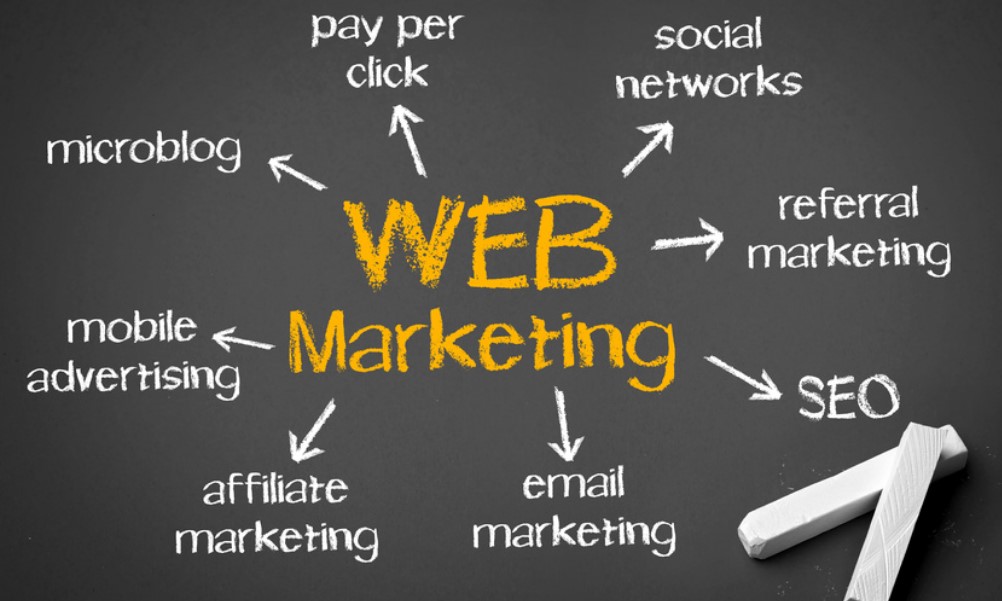
Web marketing has become a vital strategy for businesses to thrive in the digital age. Its success lies in its unique and powerful features, which make it distinct from traditional marketing methods. Below is a detailed exploration of the key features of web marketing:
1. Precise Audience Targeting
Web marketing allows businesses to reach specific audiences based on detailed criteria such as demographics, interests, online behavior, and geographic location. This precision ensures that marketing efforts focus only on potential customers who are more likely to engage with and convert into buyers. Platforms like Google Ads and Facebook Ads excel in delivering targeted campaigns, increasing efficiency and ROI.
2. Cost-Effectiveness
Compared to traditional marketing methods like print or television ads, web marketing offers a more affordable and scalable approach. Businesses can start campaigns with budgets tailored to their needs, whether it’s a small local business or a large global enterprise. Pay-per-click (PPC) models, for instance, ensure that businesses only pay for actual engagement, reducing wasted spending.
3. Real-Time Analytics and Performance Tracking
One of the standout features of web marketing is the ability to track campaign performance in real-time. Tools like Google Analytics, SEMrush, and HubSpot provide insights into:
- Traffic sources (organic, paid, or referral).
- User behavior on websites.
- Conversion rates and ROI.
This data empowers businesses to make informed decisions, refine strategies, and continuously improve their campaigns for maximum effectiveness.
4. Global Reach and Scalability
With web marketing, businesses can reach a global audience without the constraints of geography. Whether targeting local customers or expanding to international markets, the internet offers endless opportunities for growth. Additionally, web marketing campaigns can scale seamlessly to align with business expansion, from a small startup to a multinational corporation.
5. Omnichannel Integration
Web marketing enables a unified approach across multiple platforms, including websites, social media, email, and search engines. This ensures a consistent brand message and experience for customers regardless of the channel they use. For example, a customer can discover a brand on Instagram, visit its website, and receive a follow-up email, all as part of a cohesive strategy.
6. Interactive and Personalized Experiences
Web marketing provides tools to engage customers interactively, such as quizzes, surveys, or live chats. Additionally, personalization features, like tailored email campaigns or product recommendations, enhance customer satisfaction and foster loyalty.
By leveraging these features, web marketing empowers businesses to connect with their audience effectively, maximize ROI, and build lasting relationships.
Benefits of Web Marketing
Enhanced Brand Visibility
Web marketing significantly boosts your brand’s online presence. With a strong SEO strategy, your website can rank higher on search engine results pages, driving organic traffic. Paid advertising campaigns further amplify your visibility, reaching audiences beyond your existing network.
Cost-Effectiveness
Traditional marketing methods like print or television ads are often expensive and lack precise targeting. Web marketing, on the other hand, offers cost-effective solutions like PPC campaigns, where you pay only for results. Social media platforms also provide affordable options for reaching a large audience.
Improved Customer Engagement
Web marketing fosters direct communication between brands and customers. Platforms like social media and email marketing allow businesses to engage with their audience, build relationships, and address queries promptly. Engaging content such as videos, infographics, and blog posts further enhances customer interaction.
Measurable Results
One of the standout benefits of web marketing is its measurability. Unlike traditional methods, web marketing provides real-time analytics, enabling businesses to track campaign performance, identify what works, and adjust strategies accordingly.
Best Tools for Web Marketing
1. HubSpot
HubSpot is an all-in-one marketing platform that offers a suite of tools for managing email campaigns, creating landing pages, and tracking analytics.
- Features:
- Marketing automation for nurturing leads.
- CRM integration for managing customer data.
- Analytics dashboards for tracking campaign performance.
- Use Case: Perfect for medium to large businesses looking to consolidate their marketing efforts into one platform.
- Pros: User-friendly interface, extensive features, and scalability.
- Cons: Expensive for smaller businesses or startups.
- Price: Starts at $50/month.
2. Google Ads
Google Ads is a powerful tool for running PPC campaigns that drive traffic to your website.
- Features:
- Audience targeting based on keywords, demographics, and location.
- Real-time performance tracking.
- Flexible budget options.
- Use Case: Ideal for businesses aiming to achieve immediate visibility in search engine results.
- Pros: High ROI potential, extensive reach.
- Cons: Requires expertise for optimal management.
- Price: Pay-per-click model, starting at $0.50 per click.
3. Mailchimp
Mailchimp is a popular tool for email marketing and audience segmentation.
- Features:
- Automation for email campaigns.
- Tools for A/B testing and audience analysis.
- Integration with other platforms.
- Use Case: Best for businesses focusing on customer retention and personalized communication.
- Pros: Affordable plans, user-friendly.
- Cons: Limited advanced features in the free plan.
- Price: Free for up to 500 contacts; paid plans start at $10/month.
Use Cases: Solving Real-World Problems
Web marketing is a versatile and powerful tool that addresses various business challenges across industries. By utilizing its features, businesses can overcome common obstacles, enhance their operations, and achieve specific goals. Below are real-world use cases demonstrating how web marketing solves practical problems:
1. Increasing Brand Visibility
Problem: Small and medium-sized businesses (SMBs) often struggle to compete with larger brands due to limited visibility and resources.
Solution: Web marketing enables SMBs to use strategies like SEO, PPC campaigns, and social media marketing to level the playing field. For example, a local bakery can optimize its website with local SEO keywords like “best bakery in [city]” to rank higher in search results. Simultaneously, targeted Google Ads campaigns can help attract immediate attention from users searching for bakery products.
Impact: These efforts result in increased online visibility, more foot traffic, and higher sales, even with a modest budget.
2. Driving E-Commerce Sales
Problem: E-commerce businesses face intense competition and high cart abandonment rates.
Solution: Web marketing tools like retargeting ads and email automation help e-commerce brands re-engage customers. For example, if a customer abandons their shopping cart, an automated email can be sent with a discount code, encouraging them to complete their purchase. Social media ads can also remind customers of previously viewed products.
Impact: These strategies boost conversion rates, reduce cart abandonment, and improve customer retention.
3. Building Customer Relationships
Problem: Maintaining long-term relationships with customers can be challenging in a competitive market.
Solution: Personalized web marketing strategies like segmented email campaigns and loyalty programs foster stronger connections. For instance, an online retailer can send tailored product recommendations or exclusive offers based on a customer’s purchase history. Social media platforms provide opportunities for direct engagement through comments, polls, and live Q&A sessions.
Impact: Personalized communication enhances customer loyalty and increases the likelihood of repeat purchases.
4. Expanding into New Markets
Problem: Businesses looking to expand internationally often face the challenge of reaching unfamiliar markets.
Solution: Web marketing provides tools to target specific regions with localized campaigns. Multilingual websites, geo-targeted ads, and culturally relevant content help businesses adapt their messaging to new audiences.
Impact: Companies can successfully enter new markets, build brand recognition, and grow their customer base globally.
5. Enhancing Marketing ROI
Problem: Traditional marketing methods often lack measurable outcomes, leading to inefficiencies.
Solution: Web marketing tools like Google Analytics and SEMrush track performance metrics such as traffic sources, conversion rates, and customer demographics. This data enables businesses to refine campaigns for better results.
Impact: Businesses achieve higher ROI by focusing their resources on strategies that deliver proven results.
FAQs
Q1: Which web marketing tool is best for beginners?
A: Mailchimp and Canva are excellent options for beginners due to their affordability, ease of use, and beginner-friendly features.
Q2: Can small businesses benefit from web marketing?
A: Absolutely! Web marketing provides cost-effective solutions that allow small businesses to reach their target audience and compete with larger companies.
Q3: How can I measure the success of my web marketing campaigns?
A: Tools like Google Analytics and SEMrush provide detailed insights into traffic, engagement, and conversions, enabling you to evaluate and refine your strategies effectively.
